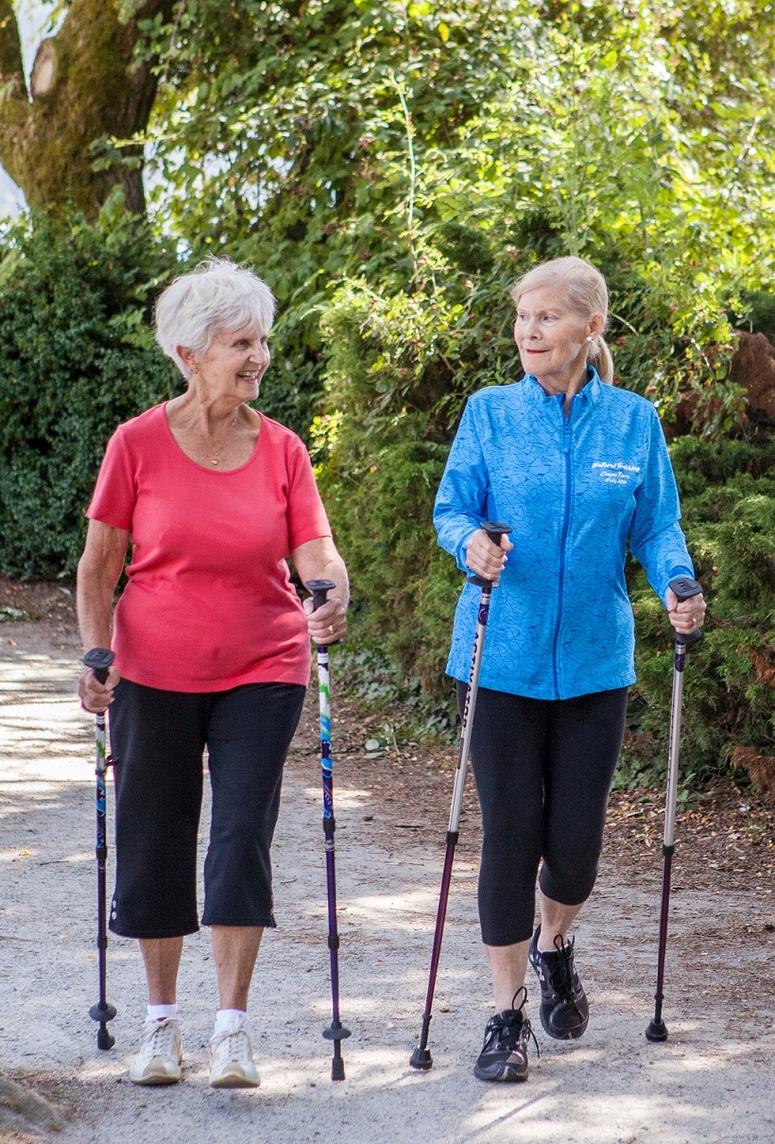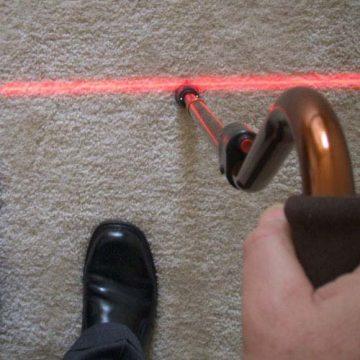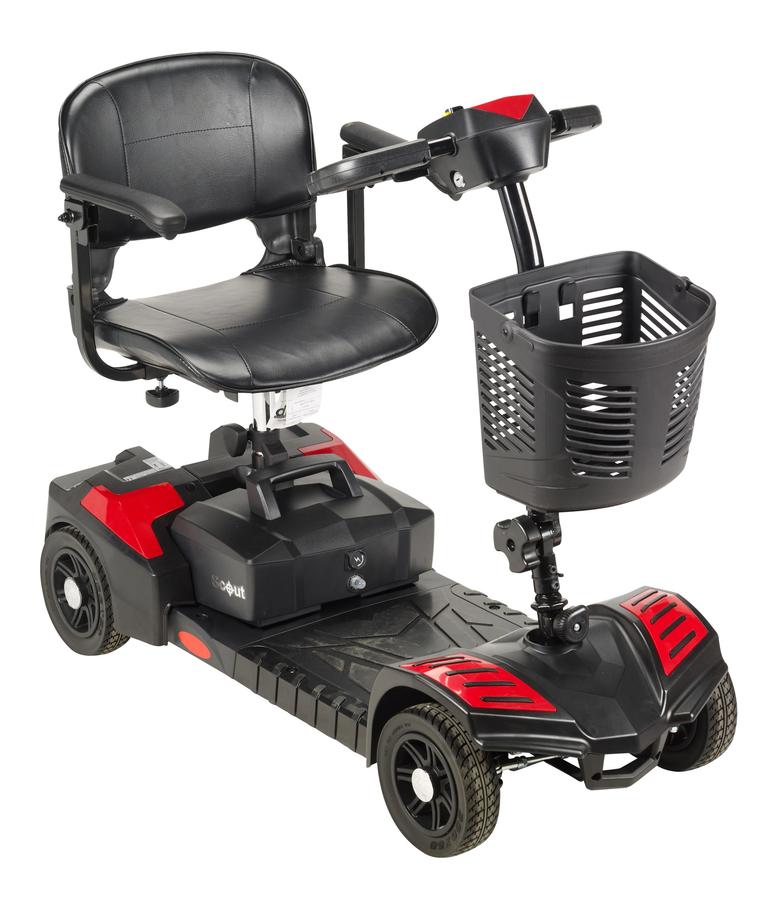
Editor’s note: In this blog, Karlee Pringle and Samantha Lau, second-year students in the School of Occupational Therapy at the University of Western Ontario in Canada, discuss tools (assistive devices) to help people with Parkinson’s more safely and easily access and navigate local communities and resources.
What is community mobility?
Community mobility is an individual’s ability to navigate their community in a way that enables participation in personal, work, social, cultural and civic opportunities. Having access to everything a community offers — public transit, community facilities, recreational and exercise activities, residential areas, shopping districts and more — is a right and it fosters a sense of belonging.
How might Parkinson’s impact community mobility?
Parkinson’s disease (PD) can affect community mobility in many ways. Walking may be limited by decreased balance, freezing of gait (a temporary inability to move) or dyskinesia (involuntary movement). Aspects of the environment, such as uneven sidewalk surfaces, weather conditions and neighborhood walkability, can also affect accessibility and ability to engage in outdoor activities.
In many areas, access to the community requires access to transportation, which may be challenging for people, both with and without PD, who have retired from driving or who lack accessible public transit.
Who and what can help?
Occupational therapists, like us! Although occupational therapy (OT) is traditionally understood to focus on safety and accessibility in the home, it can also provide strategies and support to enhance your confidence and ability to navigate your community.
One way occupational therapists can support community mobility is through assistive devices. Assistive devices are products that are designed and/or adapted to support participation in daily activities. Here, we highlight a few devices that may be helpful for people with Parkinson’s:
Car grab bar

For those who have difficulty getting in and out of the car (also called “transferring”), a handlebar can help. This small, portable, easily storable device has a metal hook attached to a non-slip handle. To get in or out of the car, the metal hook is placed inside the U-shaped latch on the inside of the car door. The user can then leverage the additional support of this handle to assist with sitting or standing. Once in or out of the vehicle, the device is removed from the latch and stored in a convenient location, like the inside pocket of the car door. This device typically ranges from $15-30 and can be easily purchased from online retailers, such as Amazon.
Recumbent tricycle

For those who love biking but find it challenging or unsafe due to changes in balance and strength, a recumbent tricycle can be a wonderful alternative. Having three wheels allows for a sturdier base of support, and backrests can help maintain core balance. A number of different models at various price points provide varying levels of support, but the general advantage is that it is a lower-impact option that requires less balance. For more information, look online to locate rentals or places to purchase in your area.
Walking poles

Walking poles can provide more stability and promote good posture, especially for people with balance or walking changes or stooped posture. They also encourage larger movement patterns to overcome the smaller, shuffling walking pattern that some people have with Parkinson’s. Walking poles can be used indoors or outdoors, making them a versatile option for everything from hiking to mall walking. Walking poles are available for purchase without the need for a prescription.
Other options to support daily mobility include canes, walkers and wheelchairs. These mobility aids can facilitate safe navigation of the home and community and can either be found in standard home care or medical stores or completely custom-made. When considering a mobility device, it is imperative that you involve an occupational therapist or physical therapist. These professionals have knowledge of how to assess for and fit a device that will best meet your needs.
Single point cane

A single point cane can be a great addition for individuals who need a bit of extra support for balance when walking. When in the community, canes allow for increased comfort, safety and overall stability. The cane can also act as a visual target to encourage larger steps instead of shuffling.
Laser Cane

A laser cane is a single point cane with a laser attachment that projects a red line in front of the user when the cane is touching the ground. For individuals who experience freezing of gait, the laser is used as a visual cue to guide the user on where to step. By offering this visual cue, individuals can break their freezing episodes and experience a longer step. (Separate laser lights that attach to any cane or walker also are available.)
Ice pick attachment for canes

For those using canes, navigating icy or snowy terrain can be difficult. Using an ice pick attachment allows the cane to provide more stability even in these conditions, making weather slightly less of a barrier to mobility. This attachment must be removed indoors.
Rollator walker

A rollator walker is a four-wheeled walker that has a built-in seat, and typically, a basket for storage. This type of walker additionally includes brakes, which improve safety when sitting in the built-in seat. Having the seating option is helpful when out in the community as it allows the user to take breaks when walking or standing for a prolonged period.
Although the rollator walker is a very common type of walker, there are other types available on the market. A walker without wheels is a type of mobility device which is typically seen with tennis balls or rubber tips on the ends. These walkers, however, are best used indoors and are not recommended for individuals with impaired balance as they require lifting the device with each step, which can lead to falls.
Another type of walker is a three-wheeled walker, which through its design, allows for maneuverability, especially in small spaces. This type of walker could be beneficial to an individual who needs more support than a cane but does not require as much stability as offered by the four wheeled walker.
Manual Wheelchair

As a means of energy conservation, a manual wheelchair can be a helpful device to support people with Parkinson’s in the community. As the name suggests, this wheelchair can be propelled by the individual themselves, or another person can push the wheelchair. For individuals who experience excessive shuffling, dyskinesia or fatigue, a manual wheelchair can allow individuals to engage in meaningful activities without having to worry about their Parkinson’s symptoms getting in the way of their mobility. These can be especially helpful for navigating larger spaces, longer distances or lengthier days, as with events or conferences. To find a wheelchair that will best accommodate your needs, it is beneficial to involve an occupational or physical therapist who can conduct a proper fitting and prescribe a device that suits your individual body measurements and needs.
Power Wheelchairs and Scooters


Power wheelchairs and scooters may be an option for individuals whose symptoms more significantly limit the ability to walk or get around. Both devices are powered by electricity, allowing the user to steer and control the device using either a joystick on the power wheelchair or the handles on the scooter. Power wheelchairs and scooters can be costly, and to acquire funding support, a formal assessment is required from an occupational or physical therapist to prescribe a suitable device.
Where can I learn more?
When selecting an assistive device, there are many different considerations, such as cost, availability, comfort and satisfaction. Many are available for you to purchase directly, but some require a prescription (which may help with cost, if covered by your insurance). If possible, work with an occupational or physical therapist who can recommend and match you with the best device for your needs and teach you how to use it.
References
- Car Grab Bar [Online image]. (n.d.). Stander Inc. https://stander.com/product/handybar-auto-grab-bar/
- Lamont, R. M., Morris, M. E., Woollacott, M. H., Brauer, S. G. (2012). Community walking in people with Parkinson’s disease. Hindawi, 2012. https://doi.org/10.1155/2012/856237
- Laser Cane [Online Image]. (n.d.). Mobility Care. https://www.mobilitycare.net.au/buy/instep-laser-cane/
- Manual Wheelchair [Online Image]. (2022). Drive Medical. https://www.drivemedical.com/us/en/products/mobility/wheelchairs/standard-wheelchairs/silver-sport-1-wheelchair/p/989-1
- Polgar, J. (2011). Enabling community mobility is an opportunity to practice social occupational therapy/ Faciliter la mobilité dans la communauté: une façon d’exercer l’ergothérapie sociale. Canadian Journal of Occupational Therapy, 78, 67-71. doi: 10.2182/cjot.2011.78.2.1
- Power Scooter [Online Image]. (2022). Align Home Health Care. https://alignhomehealthcare.ca/product/scout-compact-travel-power-scooter-4-wheel/
- Power Wheelchair [Online Image]. (n.d.). Top Mobility. https://www.topmobility.ca/jazzy-elite-14-power-chair-p89.htm
- Single Point Cane [Online image]. (2021). Align Home Health Care. https://alignhomehealthcare.ca/product/adjustable-height-offset-handle-cane-with-gel-hand-grip-blue-crackle/
- Quad Cane [Online Image]. (2022). Drive Medical. https://www.drivemedical.com/us/en/products/mobility/canes/quad-canes-large-base/p/457-1
- Recumbent Tricycle [Online Image]. (2018). RAD Innovations. https://www.rad-innovations.com/blog-our-news/about-recumbent-trikes
- Rollator Walker [Online Image]. (2023). Westin Healthcare. https://www.westinhealthcare.com/product/nexus-3-rollator/
- Walking Poles [Online Image]. (2014). Urban Poling. https://urbanpoling.com/november-is-seniors-falls-prevention-month-across-alberta-2/
- Ice Pick Attachment [Online Image]. 1800 Wheelchair. (n.d.) https://www.1800wheelchair.ca/product/cane-crutch-ice-pick-attachment/